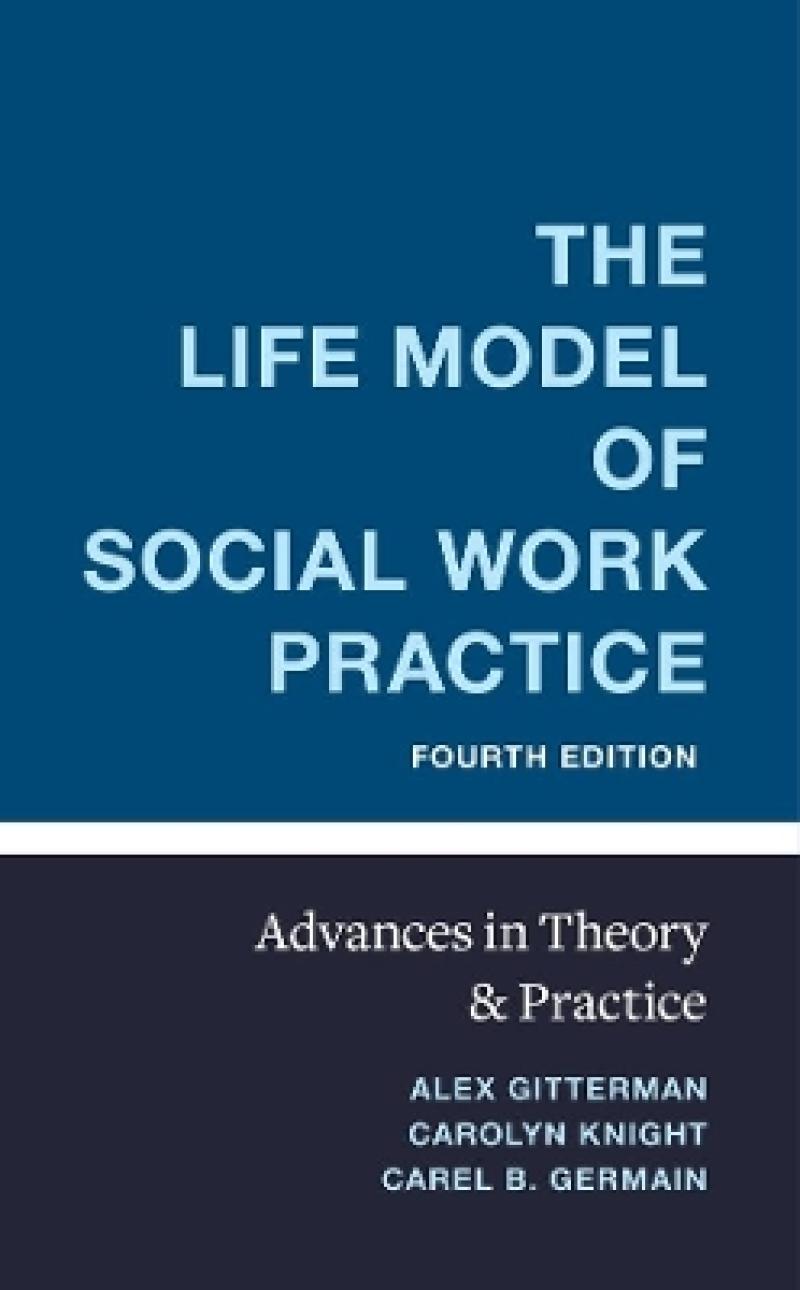Although a lengthy effort with 756 pages, [this fourth edition of <i>The Life Model of Social Work Practice</i>] is an enjoyable book made possible through the authors' treatment practicality and use of many practice vignettes and practical case examples. Social workers in general will find this book useful with an array of client examples, and the social group workers will equally find the book helpful along with the identification of some impediments that the latter practitioners uniquely face.
- Maurice S. Fisher Outpatient Services, P.C., Roanoke, Virginia, Social Work with Groups
This welcome new edition of <i>The Life Model of Social Work Practice</i> does an excellent job of assessing and sharing recent advances without losing the integrity of the life model approach. The practice examples, dilemmas, and scenarios are highly engaging, drawing readers into the application of key skills and strategies.
- Carol S. Cohen, board member, Council on Social Work Education,
The efficacy of <i>The Life Model of Social Work Practice</i> spans generations. In 1999, as a doctoral student, I used it to examine Black gay men’s management of HIV. Today, my MSW students use it to examine oppression, COVID-19, and other impediments to environmental fit. This book is helpful in understanding the human condition.
- Robert Miller, editor of <i>The Qualitative Research in Social Work</i>,
The fourth edition of <i>The</i> <i>Life Model of Social Work Practice</i>, a towering classic in the field, remains highly relevant for contemporary issues facing society and social workers. This text should be required in all schools of social work as it elegantly integrates the levels of practice that distinguish our profession.
- Marion Bogo, author of <i>Social Work Practice: Integrating Concepts, Processes, and Skills</i>,
This thoughtfully updated fourth edition of <i>The</i> <i>Life Model of Social Work Practice</i> provides a transactional bridge between the person and the social environment that honors the profession’s commitment to individual change and social reform. The critically relevant integrated practice model in this text will serve as a much-needed compass for social work in unprecedented and complex times.
- Manny John González, Florida Atlantic University,
The authors detail the theoretical foundation of the ecological perspective and the life model’s emphasis on evidence- and ethics-guided practice, culturally competent and diversity-sensitive practice, and the multiple sources of accountability that social workers face. The text features an extensive discussion of the principles of trauma-informed practice and their implications for social work practice. Its discussion of cultural competence and sensitivity to diversity incorporates contemporary concepts such as cultural humility and privilege, intersectionality, and critical race theory and presents their application to practice. The authors integrate current research throughout the text and provide numerous research applications to underscore and model the importance of evidence-guided practice.
The fourth edition reflects the National Association of Social Workers Code of Ethics and the Council on Social Work Education’s most recent set of competency standards, which accredit social work schools and programs. It is accompanied by a teachers guide that provides chapter summaries, recommended teaching methods and skills, questions for discussion, and suggested assignments and identifies where in the text the nine EPAS competencies and their associated practice behaviors are addressed.
Note to Instructors
Acknowledgments
Part I. Overview
1. Social Work Practice and Its Historical Traditions
2. The Ecological Perspective
3. The Life Model of Social Work Practice: An Overview
4. Culturally Competent and Diversity-Sensitive Practice and Cultural Humility
5. Assessment, Evidence-Guided Practice, and Practice Evaluation
Part II. The Helping Process in Life-Modeled Practice
Initial Phase
6. Preparation: Settings, Modalities, Methods, and Skills
7. Beginnings: Settings, Modalities, Methods, and Skills
Ongoing Phase
8. Helping Individuals, Families, and Groups with Stressful Life Transitions and Traumatic Events
9. Helping Individuals, Families, and Groups with Environmental Stressors
10. Helping Family Members with Maladaptive Communication and Relationship Patterns
11. Helping Group Members with Maladaptive Communication and Relationship Patterns
12. Helping with Maladaptive Relationship and Communication Patterns between Social Workers and Clients
Ending Phase
13. Endings: Settings, Modalities, Methods, and Skills
Part III. Life-Modeled Practice at the Community, Organizational, and Political Levels
14. Influencing Community and Neighborhood Life
15. Influencing the Practitioner’s Organization
16. Influencing Legislation, Regulations, and Electoral Politics
Appendix A: Individual, Family, and Group Assessments
Appendix B: Practice Monitoring—Records of Service
Appendix C: Practice Monitoring—Critical Incidents
Appendix D: Force Field Analysis
Notes
References
Index
Produktdetaljer
Biografisk notat
Alex Gitterman is professor of social work at the University of Connecticut. His Columbia University Press books include Mutual Aid Groups, Vulnerable and Resilient Populations, and the Life Cycle, third edition (2005) and Handbook of Social Work Practice with Vulnerable Populations, third edition (2014). He is also the coeditor of The Encyclopedia of Social Work with Groups (2009) and Mental Health and Social Problems: A Social Work Perspective (2010).Carolyn Knight is professor emerita of social work at the University of Maryland, Baltimore County. She is coeditor of Trauma-Informed Supervision in a Global Context (2019) and Group Work with Populations at Risk, fourth edition (2016) and the author of Introduction to Working with Adult Survivors of Childhood Trauma (2009).
Carel B. Germain (1916–1995) was professor emerita of social work at the University of Connecticut. Her books include Human Behavior in the Social Environment: An Ecological View, second edition (Columbia, 1999).
